These 3 Tips Can Make All the Difference
What if you are doing everything right to care for your orchid and it still isn’t thriving, the pot may be the culprit.
Healthy roots are the foundation for healthy orchids. The best way to care for your orchid’s roots is to avoid pots that damage and kill the roots. Stay away from these kinds of orchid pots:
- Dark Colored Pots
- Orchid Pots Without Drainage
- Pots that have Absorbed Salts
- The Wrong Sized Pot – Too Big or Too Small
Find out why these pots can be so damaging to your orchid’s roots, and why you should stay away from them.
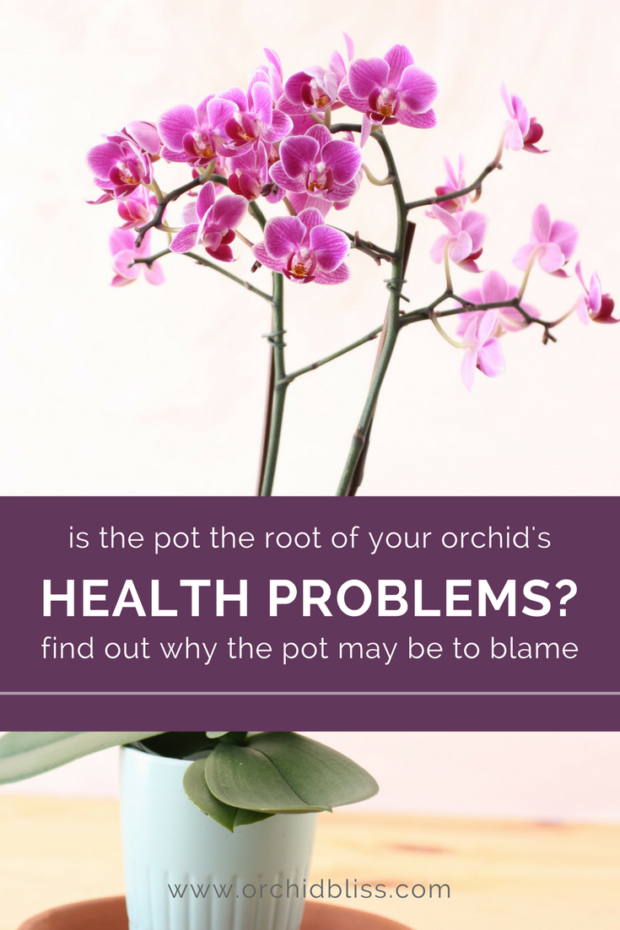
Some of the links on this page may be affiliate links. Click here to learn more.
A Dark Colored Orchid Pot
Orchids need light, which is why we set them close to windows. This is a good thing unless the dark color of the pot absorbs too much heat from the sun. I learned this lesson the hard way.
I have two mini cattleya orchids that I re-potted. One was re-potted into a dark cobalt blue pot and the other into a shiny black orchid pot. I re-potted the orchids in pots with lots of holes on the side for plenty of drainages. It wasn’t long before the roots came snaking out the holes. I was delighted by the bright, green healthy tips of the roots.
One day I noticed how warm the pot was. The morning sun streamed in through the window and was baking my orchids. I looked closer at the orchids and noticed that their root tips were black instead of green. Rather than re-potting the orchids, I moved them under fluorescent grow lights. (I high-jacked lights that I had given to my husband so he could get a jump start on planting seedlings for his vegetable garden.)
My experience with my cattleyas got me thinking about my other orchids. I set my orchids with high light requirements, like my dendrobium, in light-colored pots. Paphiopedilum and phalaenopsis have lower light requirements and do best a few feet away from windows. Those lower-light orchids are doing great in dark-colored pots.
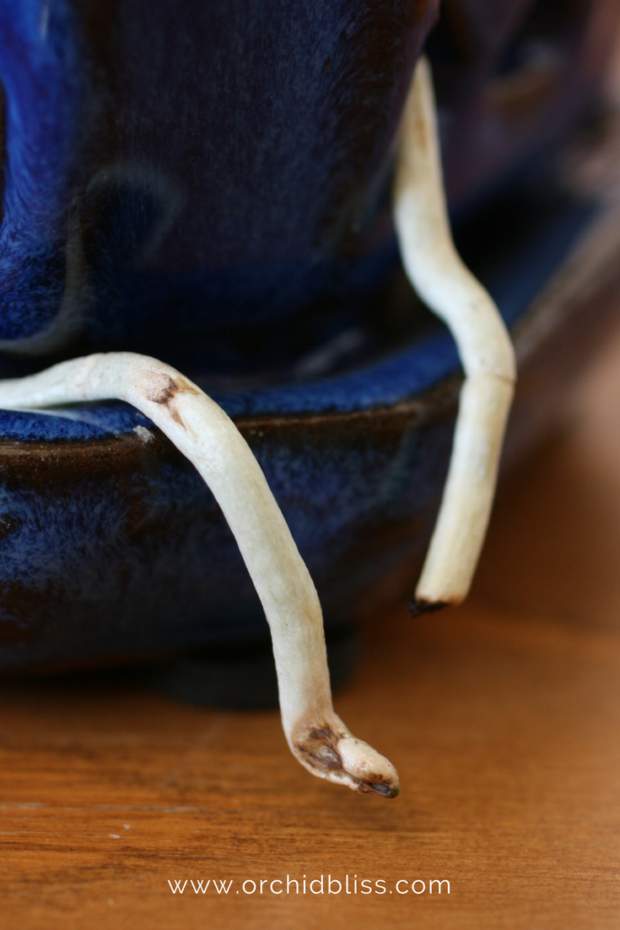
Same Pot – New Location
Sometimes even if you’re using the right orchid pot, you may need to adjust the location-in this case grow lights were the answer. My cattleya orchids have been under the grow lights for several months and the roots are doing fine, putting out new growth, and, I hope, getting ready to bloom. Cattleya orchids require lots of light, so moving the orchid to a lower-light location was not an option.
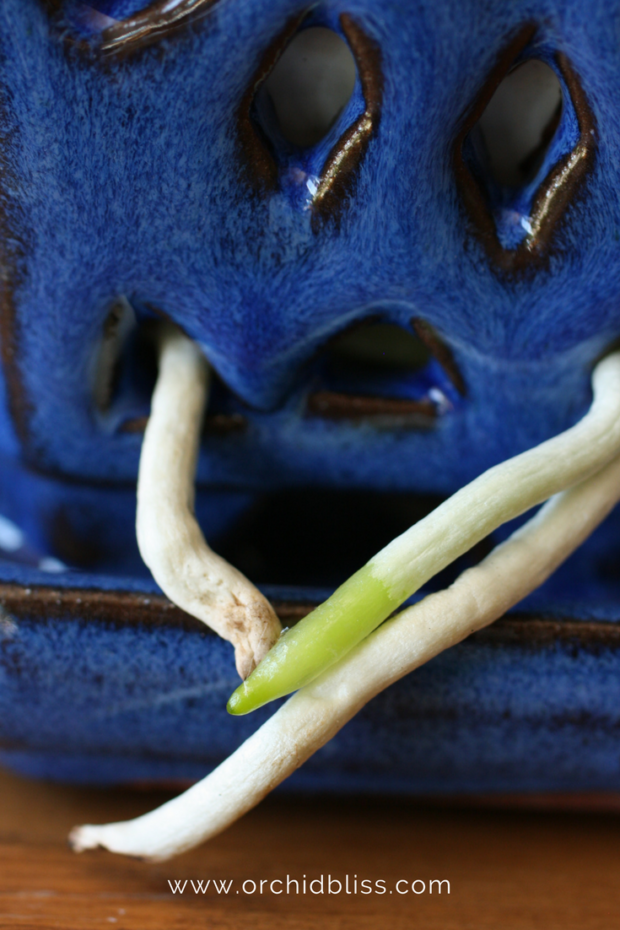
An Orchid Pot Without Drainage
Another common problem that leads to orchid problems is pots without drainage holes. This happens most commonly when buying pre-made orchid displays. In this situation, several orchids are placed in the same pot–one without drainage holes. I have purchased orchids like this. The orchids were planted in a basket lined with plastic.
To solve the drainage problem I busted the bottom of the basket. I don’t mind telling you that it took a little muscle to get it out. Then, with a knife, I sliced several holes in the plastic lining to allow excess water to drain out. I set the display on a plate to protect my furniture surface. The orchid has been in bloom for a LONG TIME, but once it finishes blooming I will re-pot them in their own separate pots, complete with plenty of drainage holes.
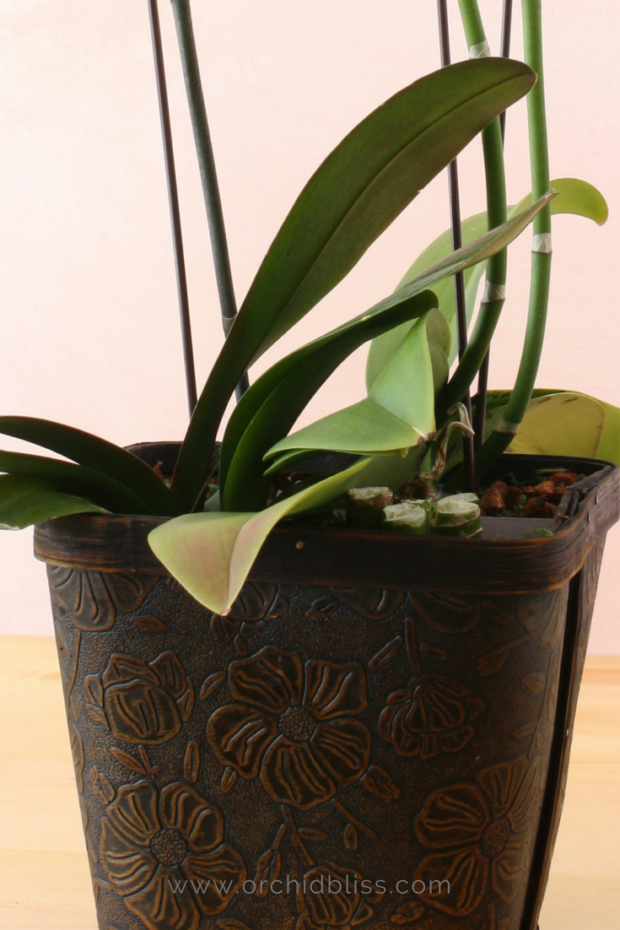
Discard or Leach Pots That Have Absorbed High Salts
It is easy to tell if your orchid’s pot has absorbed too many fertilizer salts. The orchid’s root tips that touch the pot will turn black or brown. While fertilizer, in small, diluted quantities, will help you to grow strong, vigorous orchids, the salts, the carrier for the fertilizer nutrients, can kill an orchid. Unglazed ceramic pots or terracotta pots are particularly prone to absorbing salts.
This doesn’t mean you shouldn’t use fertilizer or that you should avoid unglazed ceramic orchid pots, it just means that you need to take precautions against letting the salts build up too high. Once the salts reach an intolerable level, an orchid can quickly die.
To avoid high salt levels, repot your orchid every year or two. The benefits of repotting are two-fold.
- Your orchid will get a fresh potting mix.
- You can replace or leach the salts from the pot.
To leach salts from an unglazed ceramic pot, or a terra cotta pot just place the pot in a large bowl and pour distilled water over the pot to cover it. Let the pot soak for about an hour. One week later, repeat the leaching process.
Note: many pots are glazed on the outside, but not on the inside and will still benefit from leaching.
Finding a Pot Goldilocks Style: Too Small – Too Big – Just Right
Like Goldilocks, orchids like things “just right.” While orchids love being a little crowded in their pots, every year or two it’s time to re-pot. Just as an orchid won’t perform at its best if its pot is overcrowded, a too-large pot will also inhibit flowering.
The best time to re-pot is just after the orchid has finished blooming. This is when the orchid is ready to shift gears and put its energy into its root systems. Select a pot just slightly larger than their former pot, one with plenty of drainage holes, and one that isn’t too dark. Generally, I like to use a clear pot so that I can see the roots. Then I slip the clear pot into another (light-colored) pot.
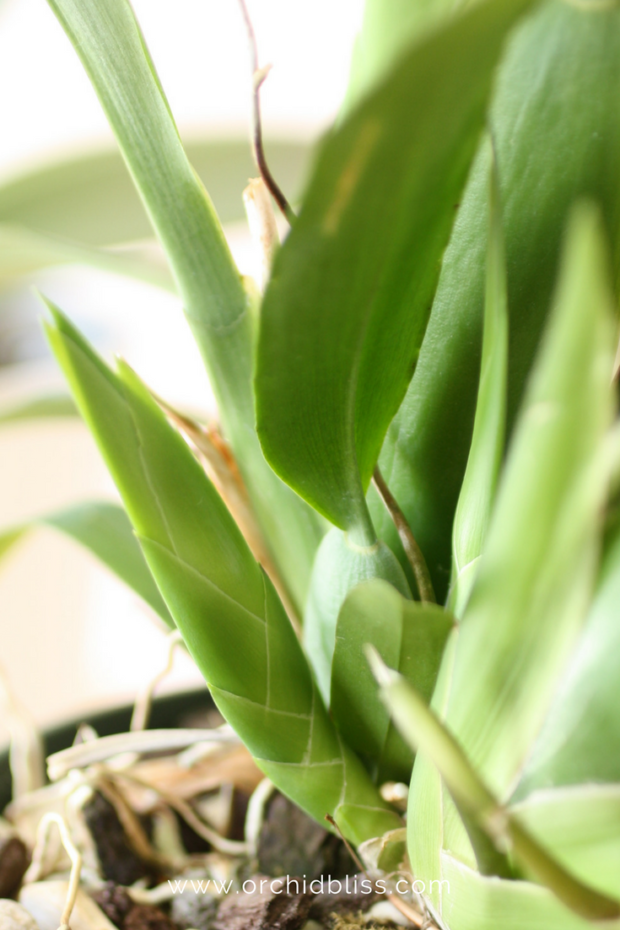
Your Turn: Find the Right Orchid Pot
Assess your orchid pots. Are your orchids over-heated, over-watered, or over-crowded? The answer may be to try a new, lighter-colored pot, or it may be time to move the orchid under grow lights, or your solution may be to re-pot your orchid in a pot with drainage. With the right orchid pot, your orchid will have the best odds for health and vitality
Ready to Learn More?
Discover more about keeping your orchid’s leaves and roots healthy by grabbing your free cheat sheet. Click here to grab your cheat sheet to learn how to grow healthier orchids. It will be super helpful.
Some orchid growers strongly suggest growing orchids in terracotta, while others advise against it. Is terracotta right for you?
In addition to the right orchid pot, the potting media also has a tremendous impact on your orchids. Are you using the right orchid potting mix for your orchids?
Lastly, here is some super helpful information on when to pot, how to pot, and the tools I use to pot my orchids.
